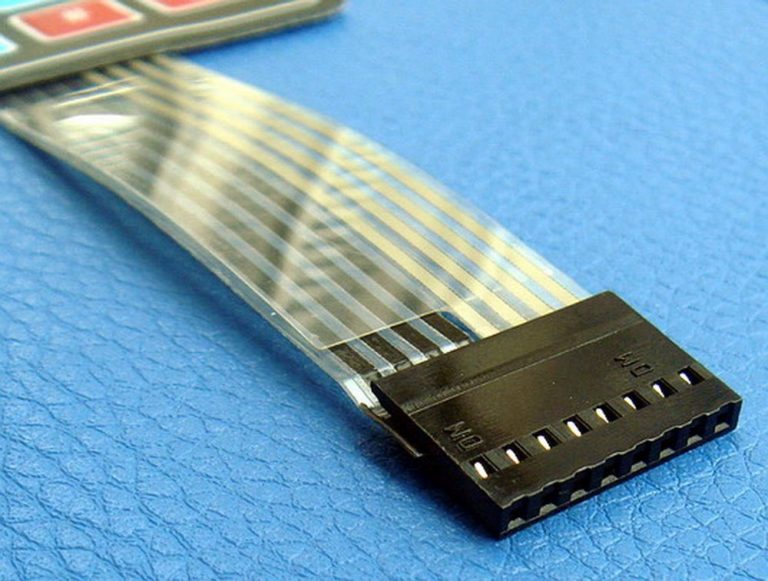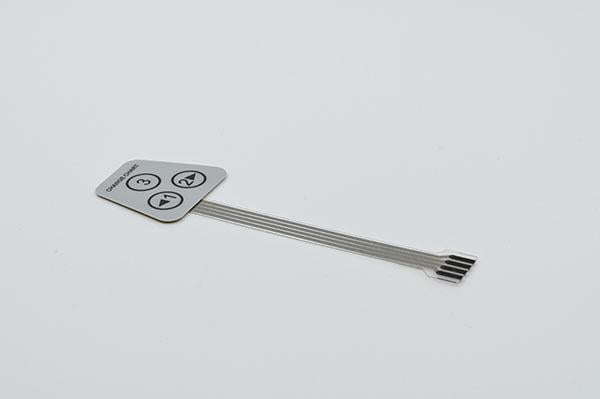Many engineers prefer working with a proven membrane switch manufacturer for custom solutions.
Many engineers prefer working with a proven membrane switch manufacturer for custom solutions.
Blog Article
All Concerning Membrane Layer Switch: Recognizing Its Style and Performance
When you think of the control user interfaces in contemporary devices, membrane buttons often enter your mind. These elements are greater than simply switches; they blend design and capability seamlessly. Understanding just how they work and what makes them effective can change your point of view on everyday electronics. There are subtleties to their layout and efficiency that you might not be aware of. Let's explore what sets membrane switches over in addition to various other control systems.
What Are Membrane Buttons?

Their seamless nature makes them very easy to tidy and resistant to dust and wetness, an essential function in several environments. Membrane layer switches can likewise be tailored regarding shape, dimension, and graphics, enabling producers to create distinct user interfaces customized to particular products. Plus, they're light-weight and thin, which assists in minimizing the total bulk of devices. Generally, membrane buttons play a substantial function in enhancing individual experience throughout a broad variety of applications.
How Membrane Layer Switches Job
When you press a trick on a membrane button, it activates an uncomplicated yet efficient system. membrane switch manufacturer. The top layer, usually made of versatile product, pushes down onto a conductive layer beneath it.
You'll notice that the tactile feedback varies based upon the switch style, offering either a soft click or an extra pronounced feedback. As soon as you release the secret, the membrane layer go back to its initial position, resuming the circuit and quiting the signal. This procedure takes place almost instantly, ensuring a responsive individual experience.
Membrane switches are prominent as a result of their sturdiness and resistance to dirt and wetness, making them optimal for different applications, from home appliances to medical tools. Recognizing this procedure aids you appreciate their widespread usage.
Trick Elements of Membrane Layer Buttons
Understanding the essential parts of membrane layer buttons is essential for comprehending their capability and style. The safety layer shields against environmental elements and wear, prolonging the switch's life-span. By understanding these elements, you'll acquire understanding right into how membrane changes operate and their significance in various applications.
Materials Made Use Of in Membrane Layer Change Style
The efficiency and sturdiness of membrane layer switches greatly depend on the products utilized in their layout. You normally come across polyester and polycarbonate as key substrates as a result of their exceptional toughness and versatility. These materials resist scratches and chemicals, making them ideal for demanding atmospheres.
The conductive layers usually utilize silver or carbon, picked for their integrity and conductivity. membrane switch manufacturer. Silver provides exceptional efficiency, while carbon is an affordable option. For the overlay, you could think about a matte or glossy coating, depending on your aesthetic needs and user experience
Adhesives play a crucial role as well; they bond layers safely and ensure durability. Ensure to select adhesives that withstand environmental aspects like temperature level and humidity. Do not ignore the value of an excellent printing method for graphics, as it enhances both capability and aesthetic allure. Choosing the right products will ensure your membrane layer button stands the examination of time.
Design Factors To Consider for Membrane Layer Buttons
While making membrane buttons, it's crucial to take into account different factors that affect their performance and individual experience. Start by focusing on the design and switch size; make specific they're instinctive and easy to navigate.
Do not forget the graphic layout; clear labeling and color contrast are significant for exposure. Verify your layout accommodates ecological elements, like dampness or temperature level variations, which could influence performance. Keep in mind the relevance of testing models with real users to gather comments and make essential changes. This iterative process helps you improve the layout, confirming it satisfies both useful and visual demands efficiently. By meticulously taking into consideration these elements, you'll create a membrane switch that improves usability and satisfaction.
Applications of Membrane Layer Buttons
Membrane layer buttons are functional parts located in numerous applications, from industrial equipment to consumer electronics. You'll see their effect in equipments that call for long lasting user interfaces and in devices that benefit from sleek designs. Comprehending these applications helps you value the functionality and practicality of membrane layer switches in daily modern technology.
Industrial Equipment Use
When you're wanting to improve the performance of industrial devices, membrane layer switches offer a trusted option that integrates longevity with easy to use design. These switches are best for harsh environments, giving resistance to dirt, wetness, and chemicals. You'll discover them in control panels for making devices, HVAC systems, and clinical gadgets, where precision and responsiveness are essential. Their reduced profile means they fit flawlessly into numerous equipment, saving beneficial area while maintaining convenience of use. With personalized graphics and backlighting choices, you can produce an intuitive user interface for operators, improving efficiency and safety and security. Plus, their lengthy life expectancy decreases maintenance costs, making them a clever investment for your commercial applications. Embrace membrane buttons to enhance your operations and boost overall efficiency.
Consumer Electronics Combination
In the domain name of consumer electronic devices, membrane switches play a crucial role in improving customer communication and gadget functionality. You'll discover them in gadgets like microwaves, remote controls, and gaming consoles, providing a smooth means to connect with modern technology. Their sleek design permits for easy assimilation into various products, making controls intuitive and easy to use. With their ability to include graphics and backlighting, you can appreciate a modern-day visual that complements the gadget's general look. Membrane switches also assure longevity and resistance to dust and moisture, extending the life-span of your electronic devices. By picking membrane switches, you enhance not simply the performance yet additionally the design of your tools, making everyday interactions smooth and enjoyable.
Advantages and Negative Aspects of Membrane Layer Buttons
While membrane switches offer a variety of benefits, they also feature some downsides that you ought to take into consideration. One substantial benefit is their small style, making them optimal look at this website for space-constrained applications. They're likewise affordable, offering a durable remedy with a reduced production expense. On top of that, their smooth surface is simple to clean, enhancing health in atmospheres like medical facilities.

However, there are drawbacks. Membrane switches can have a shorter life-span compared to mechanical buttons, specifically under hefty usage. They can also be much less responsive, which might impact individual feedback during operation. In addition, if harmed, fixing them can be tough and frequently requires complete replacement. Ultimately, their level of sensitivity to severe temperatures and ecological conditions might limit their efficiency in particular settings. Balancing these benefits and drawbacks will certainly help you determine if membrane layer buttons are the best suitable for your project.
Often Asked Concerns
How Much Time Do Membrane Changes Commonly Last?
Membrane layer changes typically last in between 5 to one decade, depending upon usage and environmental conditions. You'll wish to examine factors like wear, direct exposure to dampness, and temperature variations to gauge their longevity properly.
Can Membrane Switches Be Customized for Details Designs?
Yes, you can personalize membrane buttons to fit specific layouts (membrane switch manufacturer). You'll have the flexibility to pick shades, shapes, and layouts that match your job's demands, ensuring they mix effortlessly with your general aesthetic
What Is the Expense Array for Membrane Layer Switch Over Manufacturing?
The expense array for membrane button manufacturing normally falls between $1 and $10 each, relying on aspects like design complexity, amount, and materials. You can get quotes from producers to find the very best choice.

Are Membrane Changes Water Resistant or Resistant?
Membrane switches can be made to be waterproof or resistant, depending on products made use of and construction techniques. If you need them for damp atmospheres, ensure you define those demands throughout the you could try here design procedure.
Just How Do Membrane Switches Over Compare to Traditional Buttons?
Membrane layer buttons are usually thinner and much more versatile than standard buttons, offering a smooth layout. They're typically simpler to next page cleanse and integrate, however may not provide the responsive feedback you're made use of to with mechanical options.
Verdict

Report this page